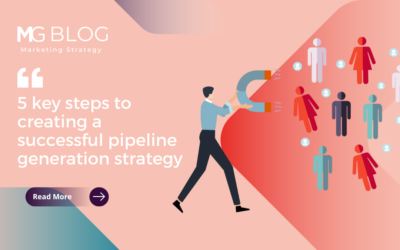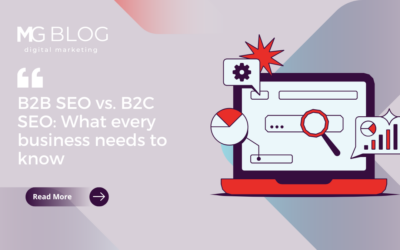Merritt Group’s new study reveals over 90% of decision makers believe their organizations will increase their use of AI year-over-year—but as demand for this technology increases, so does the need for more education.
This is the second installment of our four-part blog series analyzing the findings from the 2024 State of Generative AI Use and Impact Report and its implications for PR professionals, marketers and the technology industry at large. Read our first blog here.
AI remains the juggernaut of any and all tech conversations, most recently with Microsoft CEO Satya Nadella’s multi-billion dollar investments in AI as well as Apple’s unveiling of Apple Intelligence. It’s clear that we’ve entered the dawn of widespread AI adoption for both consumers and workers alike.
Recognizing this overwhelming shift in the emerging technology landscape, Merritt Group set out to better understand how companies are integrating AI into their businesses today and whether AI is delivering greater value to their bottom lines. We partnered with We are Talker, a multi-service content agency, to survey 200 senior-level tech-purchasing decision-makers across executive leadership, marketing, IT/operations, security, and finance/accounting at well-funded, late-stage startups and global corporations in the United States.
Last week, we unveiled the 2024 State of Generative AI Use and Impact Report, which features our findings from the survey and unveils the latest trends in AI adoption, and more. Here’s what we found:
AI Use at Work isn’t Just Ballooning, it’s Exploding
Although many companies have expressed their interest in using AI, are they actually following through? We found that when it comes to integrating AI in the workplace, companies are, in fact, talking the talk and walking the walk. For instance, 90.5% of respondents believe their organizations will use AI tools more frequently this year than they did in 2023. This increased demand aligns with the surge in AI tech startups entering the market in addition to larger companies developing new AI tools to their portfolio of tech offerings. Tracxn Technologies, a global private market intelligence company, found that the number of AI companies has doubled since 2017.
As companies begin embracing AI on a larger scale, it illuminates the need for more education around the full breadth of AI’s capabilities and which tools are best suited for not only specific teams but an entire organization. Nine in 10 IT decision-makers say they have recommended or had decision-makers within their organizations advocate for integrating AI tools into a myriad of work functions. Marketers and PR pros can cut through the noise and set their AI offerings apart from their competitors by amplifying their product message, explaining how their technology helps enhance workforce productivity and operations.
Topline?
- 90.5% of survey respondents believe their organizations will use AI tools more frequently in 2024 compared to the year prior.
- 90% of IT decision-makers recommend integrating AI tools.
- When speaking to AI buyers, focus on communicating how your solution impacts productivity and drives operations efficiecies.
Everything’s Bigger in the South, Including AI
When taking a closer look at the geographic breakdown of AI usage, IT decision makers across the country are embracing AI, but one region surpasses all other corners of the United States. Nearly one in four respondents (23.5%) located in the Southeastern region anticipate an increase in organizational use of AI tools and services. Respondents in the Southwest have slightly lower expectations, though still finishing in second place with 17.5%, saying their organizations will likely up their utilization of AI over the next year. We encourage AI marketers and PR pros to differentiate their brands by emphasizing how their stack helps meet the unique needs of leading industries within these respective regions, including manufacturing, agriculture, and retail.
Respondents in the Midwest, Northeast, and on the West Coast trail slightly behind their southern counterparts with 16.5% each respectively expecting to integrate AI tools more in the next year. However, AI marketers and PR pros shouldn’t discount this group for the proof is in the pudding—AI is here to stay. When it comes to swaying those who might be initially skeptical to fully integrate AI, it’s critical for AI communicators to target these regions with foundational messaging that explains how AI helps, not hurts workforce operations.
Topline?
- Survey respondents located in Southeastern and Southwestern regions of the United States are leading in generative AI interest at 23.5% and 17.5% respectively.
- The Midwest, Northeast, and West coast are tied in generative AI interest, with 16.5% of survey respondents expecting to increase their usage of AI tools and services.
- When working to drive AI adoption among new or potentially skeptical users, companies should tailor their message to regional interests with an emphasis on how AI can benefit workforce operations.
Lackluster AI Messaging Hinders Customers from Seeing Value
AI is reaching an inflection point as the corporate world no longer sees it as the latest tech fad, but instead, a fundamental component to transforming the way we work. Nearly one in four decision makers (24.5%) say that AI has failed to deliver value to their organization, citing unmet expectations, issues pertaining to poor data quality, in addition to cost and resource underestimations as the most common hangups.
We know that automating processes using AI and machine learning (ML) holds immense potential for companies to increase workforce productivity and bottom line. Yet without full transparency of what AI tools can do to help companies achieve these goals, deployments will likely yield little success. So, how does one go about providing transparency? AI marketers and PR pros can level set expectations among current and prospective customers by explaining what their technology is (and is unable) to achieve by weaving this messaging into informational assets such as eBooks, whitepapers, and advertorial content. In addition, AI executives can dispel misconceptions around AI by participating in interviews, webinars, and industry conferences.
Taking these important steps to building awareness around AI can help change any discourse around the technology while also encouraging more use of AI for years to come. For more insights on AI adoption trends, we encourage you to download our report.
Topline?
- 24.5% of AI purchasing decision makers believe AI has failed to deliver value due to issues around unmet expectations, poor data quality, and cost and resource underestimations.
- AI communications teams must work to ensure all product messaging is grounded in fact and customers clearly understand what the technology is and is not capable of.
Stay tuned next week for the third installment of our blog series, where Eddie Lin of Merritt Group’s AI Practice will break down AI buying habits among IT decision makers.




